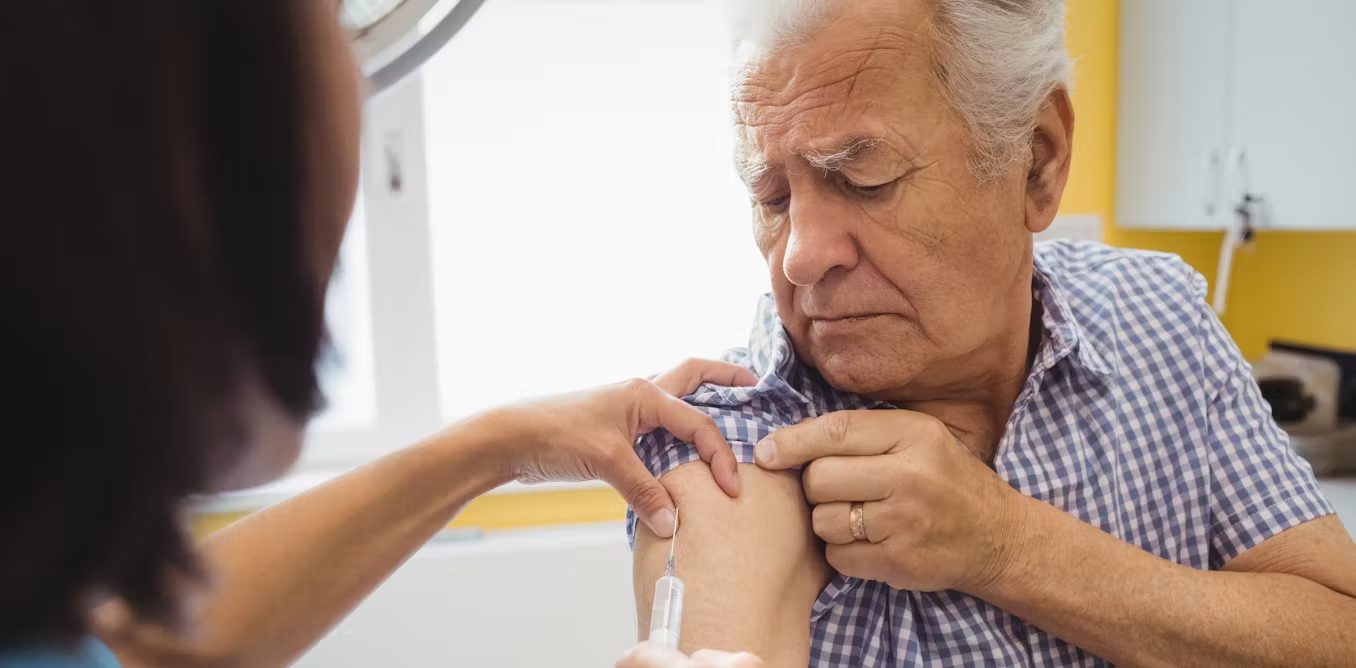Long COVID: What Do We Know?
May 13, 2024
COVID, as we know it
In the spring of 2020, medical professionals and patients introduced the term “long COVID” to characterise a persistent form of viral infection that seemed resistant to recovery. The pandemic, which claimed nearly three million lives worldwide in its first year, has morphed into a chronic ailment with a diverse symptom base. Long COVID is known to span multiple organ systems and can manifest as fatigue, headache, dyspnea, anosmia, ageusia, and diarrhoea. The pathophysiological mechanisms behind long COVID are intricate and not yet fully understood. Research indicates that some symptoms may be linked to viral persistence in tissues such as the gut mucosa, olfactory neuroepithelium, and taste buds. While our understanding of long COVID has improved, significant gaps in knowledge persist. Estimates suggest that between 6% and 68% of individuals recovering from COVID-19 experience enduring symptoms, now recognised as Long COVID or post-COVID-19 syndrome.
How is Long COVID Defined
This condition encompasses a broad spectrum of symptoms that may persist for weeks, months, or even years following a COVID-19 infection. Notably, symptoms may recede and then reappear, complicating the clinical picture. For some individuals, long COVID can endure for an extended period and may lead to disability. The impact of long COVID varies widely among individuals. Although symptoms generally ameliorate over time, consulting with a healthcare provider about post-COVID-19 symptoms is crucial for assessing the possibility of long COVID.
Commonly reported symptoms of long COVID include:
General Symptoms:
– Persistent tiredness or fatigue that significantly impairs daily activities.
– Worsening of symptoms following physical or mental exertion, known as post-exertional malaise.
– Fever.
Respiratory and Cardiac Symptoms:
– Difficulty breathing or shortness of breath.
– Persistent cough.
– Chest discomfort.
– Rapid or forceful heartbeats, often described as palpitations.
Neurological Symptoms:
– Challenges with cognitive functions, commonly referred to as “brain fog.”
– Frequent headaches.
– Disturbances in sleep patterns.
– Dizziness upon standing, or light-headedness.
– Sensations of pins and needles.
– Altered sense of smell or taste.
– Symptoms of depression or anxiety.
Digestive Symptoms:
– Diarrhoea.
– Abdominal pain.
Additional Symptoms:
– Joint or muscle pain.
– Skin rashes.
– Changes in menstrual cycles.
Understanding and addressing these symptoms through medical consultation can help in managing long COVID and improving quality of life for those affected.
The Long Road to Understanding Long COVID
For some individuals with long COVID, symptoms persist that are difficult to diagnose and manage. Despite normal results in routine medical evaluations such as blood tests, chest X-rays, and electrocardiograms, these symptoms can closely resemble those experienced by patients with myalgic encephalomyelitis/chronic fatigue syndrome (ME/CFS) and other chronic conditions that often follow viral infections. The elusive nature of these symptoms can lead to misunderstandings with healthcare providers, potentially delaying diagnosis and appropriate treatment.
Additionally, certain individuals, particularly those who experienced severe COVID-19, may develop multiorgan effects or autoimmune conditions. These can last for weeks, months, or even years post-infection, impacting various body systems including the cardiovascular, pulmonary, renal, dermatological, and neurological systems. Consequently, these individuals are at an elevated risk of developing new health conditions such as diabetes, cardiovascular diseases, thrombosis, or neurological disorders compared to those who have not contracted COVID-19. Not to mention their medical status makes it very hard for long COVID to be identified.
Moreover, severe illnesses, hospitalisations, or treatments may lead to post-intensive care syndrome (PICS), characterised by muscle weakness, cognitive impairments, and symptoms of post-traumatic stress disorder (PTSD). Although not exclusive to COVID-19, PICS can contribute significantly to the long-term health challenges faced by survivors, making it difficult to differentiate the effects caused by the illness, the virus, or a combination of both.
Certain demographics may have a higher susceptibility to developing long COVID. Ongoing research aims to identify which groups are more affected by long COVID and the underlying reasons. Indicatively, those at greater risk include individuals who experienced severe instances of COVID-19, particularly if hospitalisation or intensive care was necessary, those with pre-existing health conditions, and those who were unvaccinated against COVID-19. These insights are crucial in guiding further studies and improving patient care for those affected by long COVID.
Diagnosis
Identifying long COVID involves a coordinated approach, often facilitated by Long COVID Assessment Clinics that have been established in many urban hospitals. These clinics are not solely focused on individuals recovering from intensive care; they also cater to those who experienced mild COVID-19 symptoms but continue to suffer from long-term effects. General practitioners and specialists play a crucial role in the referral process for patients with suspected Long COVID syndrome, typically when symptoms persist beyond 12 weeks. Initial assessments may include a chest X-ray and a series of blood tests before a referral is made.
Once referred, a clinical team at the Long COVID Assessment Clinic evaluates the patient’s needs and formulates a personalised support and rehabilitation plan. This comprehensive approach may include referrals to other specialists or allied health services within the clinic, such as respiratory, cardiology, neurology, pain medicine, ENT, rheumatology, renal medicine, haematology, general medicine, geriatrics, rehabilitation, physiotherapy, exercise physiology, and mental health teams. The clinic ensures that both the patient and their GP are informed of the treatment recommendations.
Currently, many Long COVID Assessment Clinics are open to referrals and play a pivotal role in the further evaluation and management of patients exhibiting long COVID symptoms.
The ADAPT Study from UNSW
There are limited large-scale studies on the persistence of SARS-CoV-2 in various tissues post-COVID-19 recovery and its link to long COVID symptoms. However, the Kirby Institute has initiated the ADAPT Study, a pioneering research project that tracks patients from Australia’s initial COVID-19 wave. This study, published in Nature Communications, is co-led by the Kirby Institute at UNSW Sydney and St Vincent’s Hospital Sydney.
The ADAPT study has monitored COVID-19 patients and a matched control group over two years, combining patient-reported health data with detailed blood specimen analysis. Early findings revealed that clinical symptoms of long COVID aligned with biomarkers of ongoing inflammation at eight months post-infection. By 24 months, these biomarkers had largely normalised, showing no significant differences from the control group, with 62% of participants reporting improved health-related quality of life.
Despite these promising results, about a third of the participants still reported some impact on their quality of life. Professor Gail Matthews of the Kirby Institute notes that various underlying factors, not all immunological, might contribute to persistent long COVID symptoms. Professor Anthony Kelleher, Director of the Kirby Institute, cautions that while these findings are encouraging, they pertain to a specific cohort with generally mild to moderate early COVID-19 infections and may not represent outcomes for vaccinated individuals or those infected with different virus strains. The institute continues to research to understand and address the variability in patient recovery trajectories, and contribute to the body of research shaping our global perception of this chronic condition into the future.
Bamford, L. (2024) Long-COVID study reveals immunological improvement two years after infection, Kirby Institute. Available at: https://www.kirby.unsw.edu.au/news/long-covid-study-reveals-immunological-improvement-two-years-after-infection.
CDC, (2024) Long Covid or post-covid conditions, Centers for Disease Control and Prevention. Available at: https://www.cdc.gov/coronavirus/2019-ncov/long-term-effects/index.html.
Novak, S. (2024) 4 years in, a sobering look at long covid progress, Medscape. Available at: https://www.medscape.com/viewarticle/years-sobering-look-long-covid-progress-2024a10007a8?form=fpf.
Zuo, W. et al. (2024) ‘The persistence of SARS-COV-2 in tissues and its association with long covid symptoms: A cross-sectional cohort study in China’, The Lancet Infectious Diseases [Preprint]. doi:10.1016/s1473-3099(24)00171-3.












